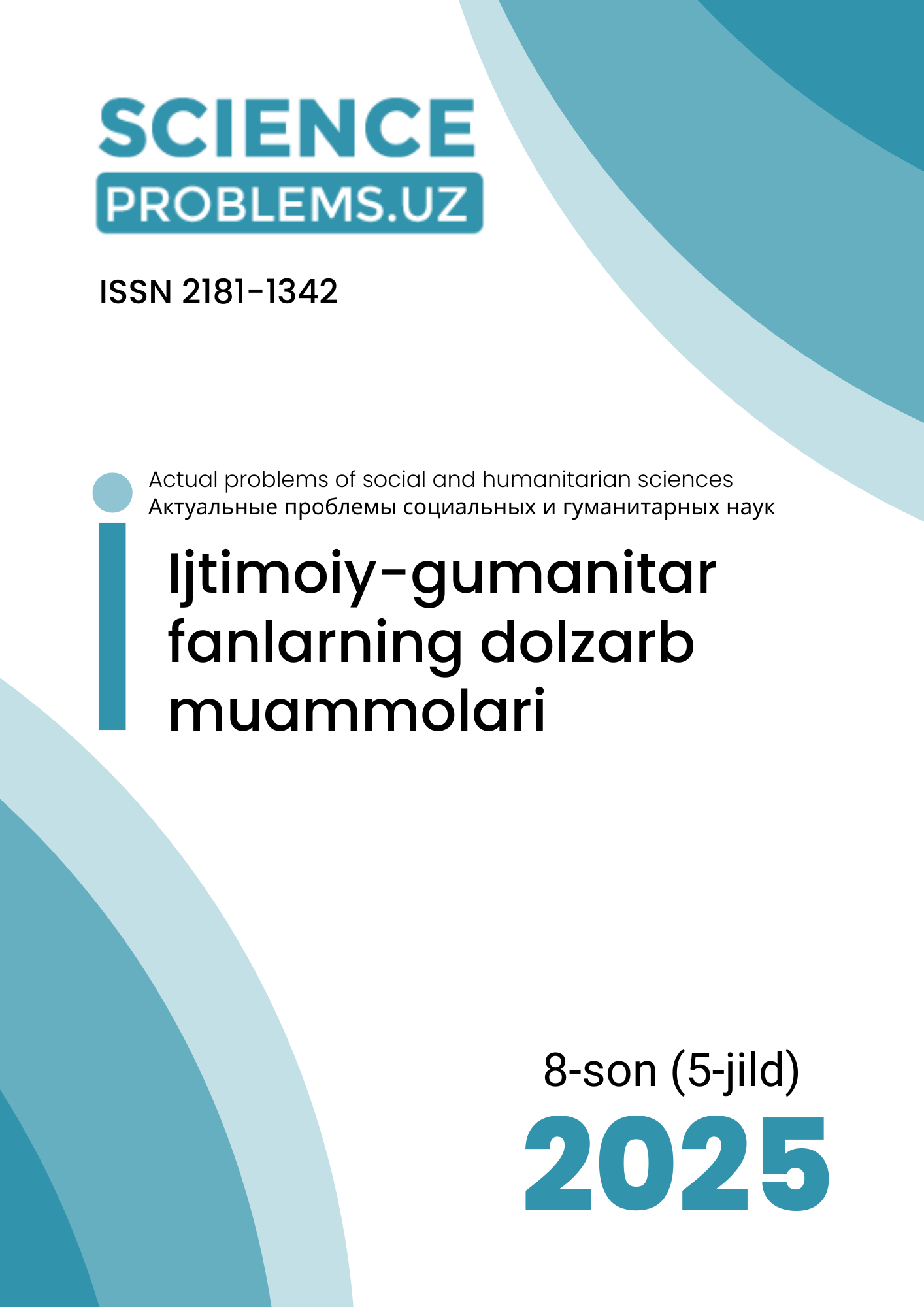TARJIMADA MADANIY KONTEKSTNING ROLI: MADANIYATLARARO NUQTAI NAZAR
Kalit so'zlar
https://doi.org/10.47390/SPR1342V5I8Y2025N25Kalit so'zlar
madaniy kontekst, tarjima strategiyalari, madaniyatlararo muloqot, Skopos nazariyasi, madaniy moslashuv, tarjimon tayyorlashAnnotasiya
Ushbu tadqiqot tarjimada madaniy kontekstning muhim taʼsirini oʻrganadi va til ifodasi bilan ijtimoiy-madaniy maʼno oʻrtasidagi oʻzaro aloqani taʼkidlaydi. Skopos nazariyasi va Madaniy burilish kabi asosiy nazariyalarga tayanib, maqola tarjimonlar qarama-qarshi madaniy tizimlar oʻrtasida vositachilik qilganda duch keladigan qiyinchiliklarni tahlil qiladi. Idiomatik, badiiy va texnik tarjima boʻyicha misollarni oʻz ichiga olgan sifatli yondashuv, madaniyatlararo talqinning murakkabligini taʼkidlaydi. Metodologik jihatdan, ushbu tadqiqot haqiqiy dunyo tarjimalariga taqqoslab, chuqur tahlilni qoʻllaydi va madaniyatlararo moslashuv strategiyalarini talqin qilish uchun tasviriy sifatli usullarni ishlatadi. Natijalar tarjimon tayyorlashda madaniy kompetensiyani oshirishni tavsiya etadi va til aniqligini madaniy sezgirlik bilan birlashtiruvchi interdisiplinar qolipni taklif qiladi. Ushbu ish tarjimashunoslikning kengroq muhokamalarga hissa qoʻshadi va madaniyatni maʼno uzatishning ajralmas komponenti sifatida birinchi oʻringa qoʻyadi.
Manbalar
1. Bassnett S. Translation studies. 3rd ed. – London: Routledge, 2002. – 292 p. – DOI: 10.4324/9780203427461.
2. Boas F. Race, language, and culture. – Chicago: University of Chicago Press, 1940. – 451 p.
3. Deardorff D.K. Identification and assessment of intercultural competence as a student outcome of internationalization // Journal of Studies in International Education. – 2006. – Vol. 10, № 3. – P. 241–266. – DOI: 10.1177/1028315306287002.
4. Fairclough N. Critical discourse analysis: The critical study of language. – London: Longman, 1995. – 252 p.
5. Hatim B., Mason I. The translator as communicator. – London: Routledge, 1997. – 269 p. – DOI: 10.4324/9780203992259.
6. House J. Translation quality assessment: Past and present. – London: Routledge, 2015. – 216 p. – DOI: 10.4324/9781315739560.
7. Katan D. Translation as intercultural communication // Baker M., Saldanha G. (eds.) Routledge encyclopedia of translation studies. 2nd ed. – London: Routledge, 2009. – P. 141–145.
8. Munday J. Introducing translation studies: Theories and applications. 4th ed. – London: Routledge, 2016. – 305 p. – DOI: 10.4324/9781315619183.
9. Snell-Hornby M. The turns of translation studies: New paradigms or shifting viewpoints? – Amsterdam; Philadelphia: John Benjamins, 2006. – 282 p. – DOI: 10.1075/btl.66.
10. Venuti L. The translator's invisibility: A history of translation. – London: Routledge, 1995. – 208 p. – DOI: 10.4324/9780203360065.
11. Vermeer H.J. Skopos and commission in translational action // Chesterman A. (ed.) Readings in translation theory. – Helsinki: Oy Finn Lectura, 1989. – P. 173–187.








